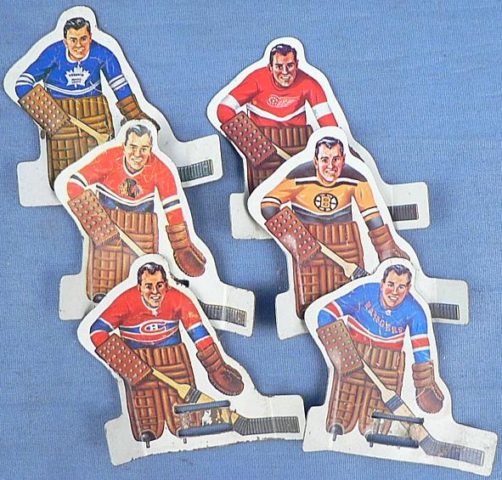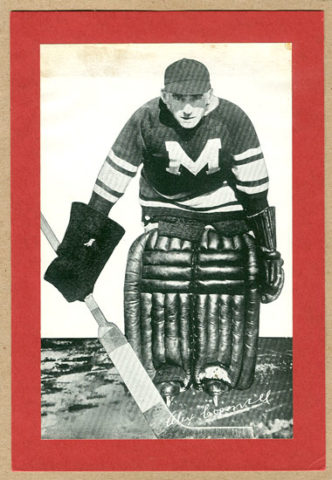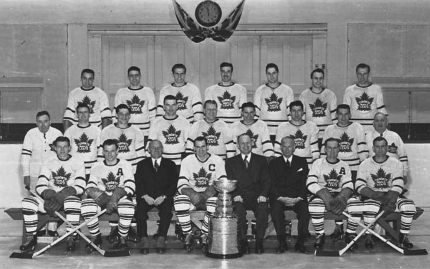Comprising an era of more than 20 years, the National Hockey League’s ‘Original Six’ carried the league from the 1940s to the late 1960s and ended with the NHL’s first great expansion in 1967.

However, while the historic status of the Montréal Canadiens, Toronto Maple Leafs, Boston Bruins, New York Rangers, Chicago Blackhawks, and Detroit Red Wings is undeniable, the ‘Original Six’ moniker is extremely misleading.
The True Originals
For starters, the ‘Original Six’ weren’t even the first six teams in the NHL. In fact, the ‘Original Six’ should really be called the ‘Original Five’. When the league was founded on Nov. 26, 1917, it admitted some of the teams from the former National Hockey Association (NHA).
Those teams were the Canadiens, the Montréal Wanderers, the Ottawa Senators, the Québec Bulldogs, and the Toronto Arenas (later Maple Leafs). The Québec Bulldogs won both the 1912 and 1913 Stanley Cups against the Ottawa Hockey Club and the Sydney Millionaires, respectively. The Ottawa Senators were easily the most successful of the NHA’s early franchises, winning a total of eleven Stanley Cups.
Uncertainty and mistrust plagued the league and its franchises for the first half-decade, resulting in the eventual relocation of the Québec club to Hamilton, Ontario, where they became known as the Tigers. After a few more years, the Hamilton Club and the Wanderers folded, and Montreal would receive a new franchise called the Maroons.
The “New” Franchises
Most have forgotten much of the early history of the NHA and its teams. The club that would become the Detroit Red Wings operated as the Detroit Cougars for the first five years of its existence. The Detroit franchise wasn’t a newly-established one, either. The ownership group for the Detroit franchise purchased the rights to the Western Canada Hockey League’s (WHL) Victoria Cougars and relocated them to the Motor City.

Similarly, the introduction of the Chicago Blackhawks resulted directly from the purchase and relocation of another franchise, the WHL’s Portland Rosebuds. The Rosebuds themselves possessed a unique and colourful history that was effectively erased after their relocation to Chicago. They won the Pacific League Championship in 1915-16 and went on to play the NHA’s Montréal Canadiens in the Stanley Cup Final, losing in five games.
After the WHL folded in 1926, the Detroit and Chicago ownership groups purchased the rights to the Cougars and Rosebuds’ players and moved the rosters to their respective cities, leaving both Portland and Victoria with no professional club and no history.
The Stable Six
In reality, the correct term for the teams currently designated the “Original Six” should be the “Stable Six.” These clubs were simply those that possessed enough financial resources to survive as long as they have. Each “Original Six” franchise was owned and operated by people with the monetary might to keep them afloat and to ensure the teams continued turning a profit. Grocery tycoon Charles F. Adams purchased the rights to the Bruins in 1924. James Norris relied on the family fortune and business acumen to steer the Red Wings until his death in 1952.
Tex Rickard, the founder of the Rangers, was also an extremely successful boxing promoter and the builder of New York’s Madison Square Garden. His financial clout and personal notoriety helped legitimize the Rangers. The traditional “Original Six” joined the league’s true original franchises after 1926.
The game-changer for the National Hockey League was the onset of the Great Depression in 1929, as the newer teams were able to survive the period while the others weren’t. The Canadiens, Maple Leafs, Bruins, Blackhawks, Red Wings, and Rangers were able to combine star power, championship pedigrees, and relatively stable profits to endure up to today, while the other, older franchises had no choice but to suspend operations due to financial constraints. The Montréal Maroons, Hamilton Tigers, and Ottawa Senators could not avoid this fate, even as winners of multiple Stanley Cups.
Star Power
One of the basic elements which allowed the NHL’s “Original Six” to survive was the presence of star players on each team. In the era of the traditional “Original Six” (1942-1967), nearly every team, with the possible exception of the Rangers, possessed a truly generational talent on their roster that not only drew fans to the games but also helped each team win multiple Stanley Cups.
- The Canadiens had Maurice Richard and Jean Béliveau.
- The Blackhawks had Bobby Hull and Stan Mikita.
- The Red Wings had Gordie Howe and Ted Lindsay.
- The Maple Leafs had Ted Kennedy and George Armstrong.

The presence of great hockey talent on these rosters helped entrench their successes, and financial clout allowed the “Original Six” franchises to survive the hardships of the 1930s and 1940s. As a result, they came to define the early history of the National Hockey League. However, the “Original Six” moniker belittles the teams which came before and the struggle of the league to establish itself as the sporting powerhouse it would eventually become.
It seems a more appropriate title for this era in NHL history would be something like the “Surviving Six,” a name that emphasizes the league’s hardships in its early history, the franchises that preceded the league’s establishment, and the tradition that arose out of them.